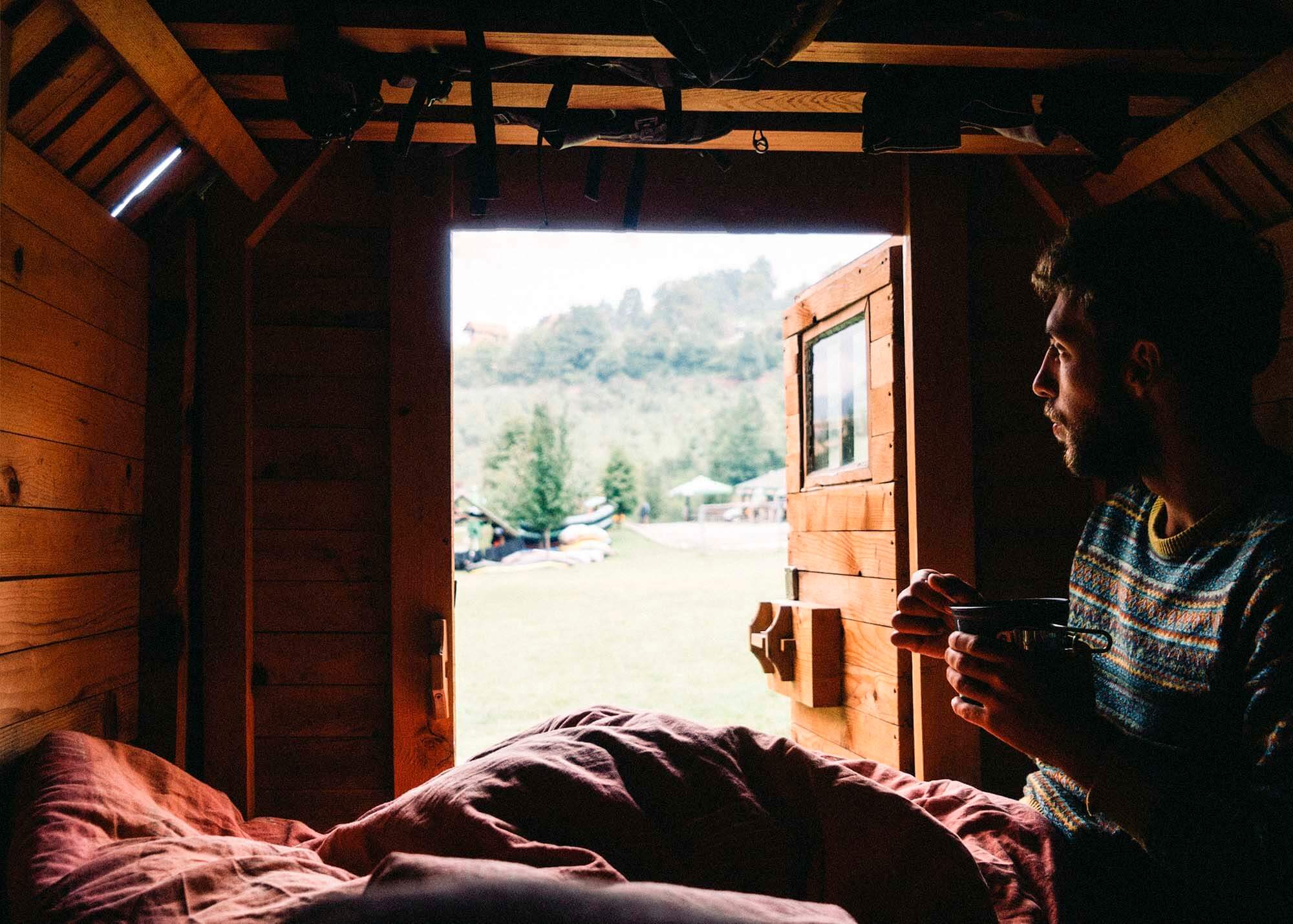It’s easy to understand why we look for the largest, most prestigious properties we can afford – we are constantly urged to define our success by our possessions: bigger, better, newer, faster, shinier. However, a relatively recent countermovement urges lower impact, fewer goods and less consumption, and at its core nestles the tiny house.

With the price of property ownership creeping skyward across most parts of Australia and leaping into the stratosphere in others, a big home isn’t always affordable to buy. Add the cost of energy and living, and big isn’t always affordable to maintain, either. With the boom of environmentally friendly housing and a return-to-basics design mentality, a trend for micro housing has cropped up, producing some positively pocket-sized living arrangements.
Whether it’s a one-room cabin with a loft for a bed space, a Japanese tree house or a converted shipping container, the trend in
minimalist shelter has well and truly skyrocketed. Despite how innovative those ideas are, there is no denying that they aren’t suited to
everyone. What could apply broadly, however, are their lessons in downsizing. Not only can people save money, but they can save time and
energy, too. It’s a good idea to consider the following benefits of smaller housing before buying the biggest home you can afford.
Small homes tend to have smaller price tags. This can be the difference between living comfortably while saving for your future or an
investment property, or worrying about what will happen if the market turns. Less debt also, generally, equals lower risk.
Having fewer rooms to heat and cool saves on energy costs and lowers your ecological footprint, too. However, it’s always a good thing to
regularly review your utility expenses and shop around for the best deals, or ask your current provider what they can do for you. In
addition to making personal lifestyle changes in your home – from small changes like taking shorter showers to bigger investments like
double glazed windows, there are more efficient changes at the core of smaller living we can all incorporate.
Big houses generally mean more maintenance. This applies to the week-to-week cleaning as well as the big responsibilities, such as clearing
gutters, mending fences or painting walls, which can’t be shirked if you intend to protect your investment. Regular maintenance can mean
less problems in the future, and while tiny homes or smaller properties still have this commitment, they tend to be smaller jobs or
investments.
All of the above leads to time saved for everything else. The more money and maintenance required for the upkeep of a home, the less time
you have. For many, this is a lifestyle choice, but an important one nonetheless.
Smaller, more affordable homes are less likely to end up stranded in the property market. The more people who can afford to buy your home, the easier it will be to sell in future. Alternatively, many small properties are trending on short-term rental sites like AirBnB, or suit smaller households, allowing it to become an investment property that can become an income source to support your mortgage.
While some lenders will only finance properties over a minimum square footage, our team at Acquired have access to a broad range of
lenders and loan products to make sure they can find the perfect one for a tiny home
First Home Buyer
10 Tips for Property Investors
Moving Checklist